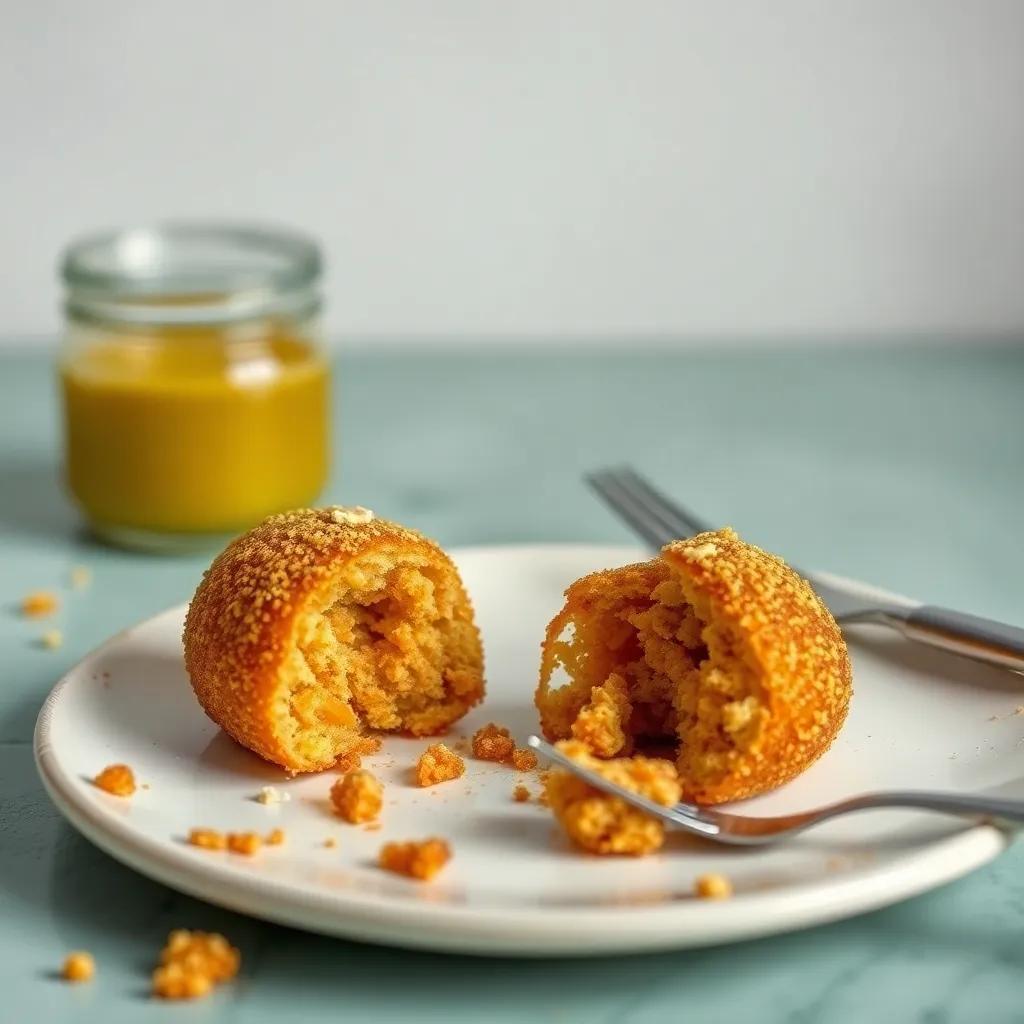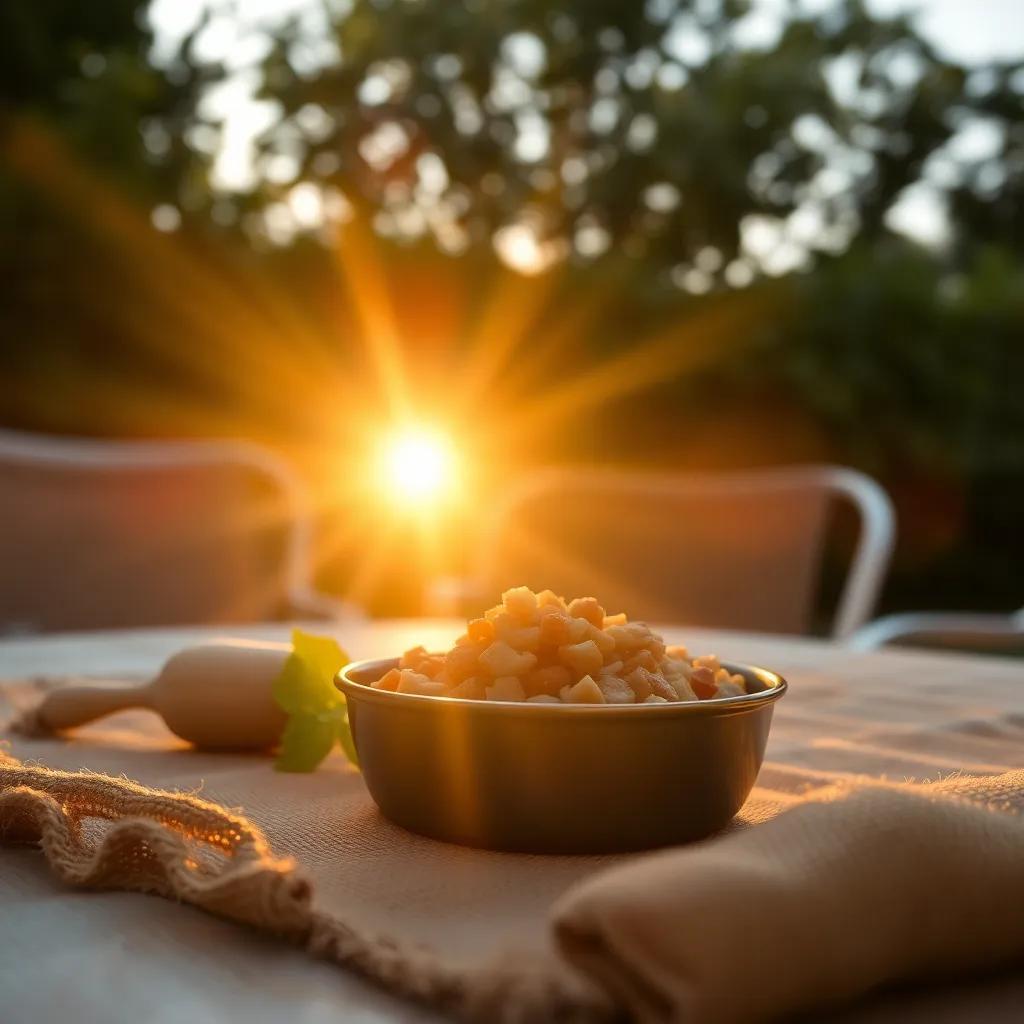Discover the Authentic Fabada Asturiana: Spain’s Hearty Bean Stew Recipe
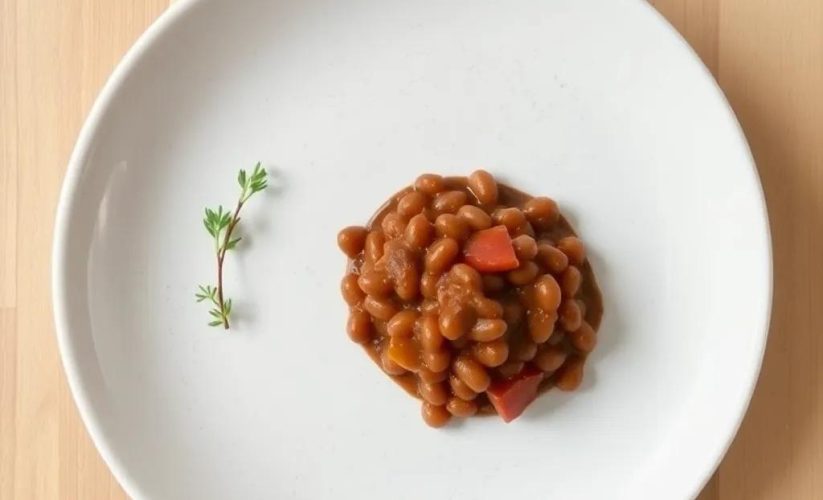
Discover the Authentic Fabada Asturiana: Spain’s Hearty Bean Stew Recipe
🌍 Cuisine: Spanish
⚙️ Difficulty: Medium
Ingredients
Nutrition Facts
550 kcal
Instructions
- Rinse the dried Fabes de la Granja beans thoroughly under cold water. Soak them overnight in plenty of cold water.
- The next day, drain the beans and place them in a large pot. Cover them with fresh cold water, about 3–4 cm above the beans.
- Add the chorizo, morcilla, and pancetta (or pork belly) into the pot with the beans. These will flavor the stew as it cooks.
- Add the bay leaf to the pot.
- Bring the pot to a gentle boil over medium heat, then lower the heat to maintain a steady simmer. Skim off any foam or impurities that rise to the surface.
- Simmer the stew gently for about 1.5 to 2 hours, ensuring the beans become tender but don’t break apart. Check occasionally, adding water if necessary to keep the beans covered.
- While the beans simmer, heat a small amount of olive oil in a skillet over medium heat. Sauté the finely chopped onion and minced garlic until soft and translucent.
- Stir the smoked paprika into the onion and garlic mixture, cooking for one more minute to release its aroma. Add this sofrito to the bean pot during the last 30 minutes of cooking to infuse flavor.
- Season the stew with salt carefully (since the meats are already salty) toward the end of cooking.
- Once the beans and meats are tender, remove the sausages and pancetta pieces to slice them if desired, then return to the pot.
- Serve the Fabada Asturiana hot in large bowls, making sure each serving has a generous portion of beans and meats.
- Optionally, drizzle with a little high-quality olive oil before serving.
- Enjoy your hearty, traditional Spanish bean stew with crusty bread.
Serving Suggestions
- Serve with crusty rustic bread or sourdough to soak up the rich broth.
- Accompany with a simple green salad dressed with olive oil and vinegar to balance the richness.
- Pair with a robust Spanish red wine, like a Rioja or Ribera del Duero.
- Top with a sprinkle of chopped fresh parsley or smoked paprika for color and extra flavor.
- Offer pickled or roasted red peppers on the side for a sweet, tangy contrast.
- Serve as a comforting winter meal, ideal after a day outdoors in cold weather.
- Use leftovers to make a fabada omelet or add to a Spanish rice dish (paella or arroz).
Table of Contents
- Intro
- Ingredient Notes
- Tips & Variations
- Leftovers & Storage
- Behind the Recipe
- FAQ
- Let’s Get Cooking!

Intro
Warm, satisfying, and rich with history, Fabada Asturiana is the kind of dish that invites you to slow down and savor every spoonful. This iconic Spanish bean stew, hailing from the Asturias region, combines simplicity with deep, comforting flavors that develop over gentle, patient cooking. It’s a meal that feels like a cozy embrace on a chilly day, perfect for sharing with family or friends around the table.
What makes Fabada so exciting to make is how approachable it is despite its hearty nature. While it requires some time to cook, much of it involves low and slow simmering that lets the ingredients meld together beautifully—giving you the chance to relax or prepare other dishes alongside. Whether you’re looking to impress guests with a traditional Spanish specialty or simply want a wholesome, satisfying dinner, Fabada delivers a rewarding cooking experience without complexity.
Fabada Asturiana shines brightest during colder months or festive gatherings when its warmth and richness are most appreciated. It’s a dish that embodies comfort food at its finest, offering not just nutrition but also a glimpse into Spain’s culinary soul. So pull out your pot, embrace the slow simmer, and get ready to enjoy a bowl of Spain’s beloved bean stew that’s sure to become a treasured classic in your kitchen.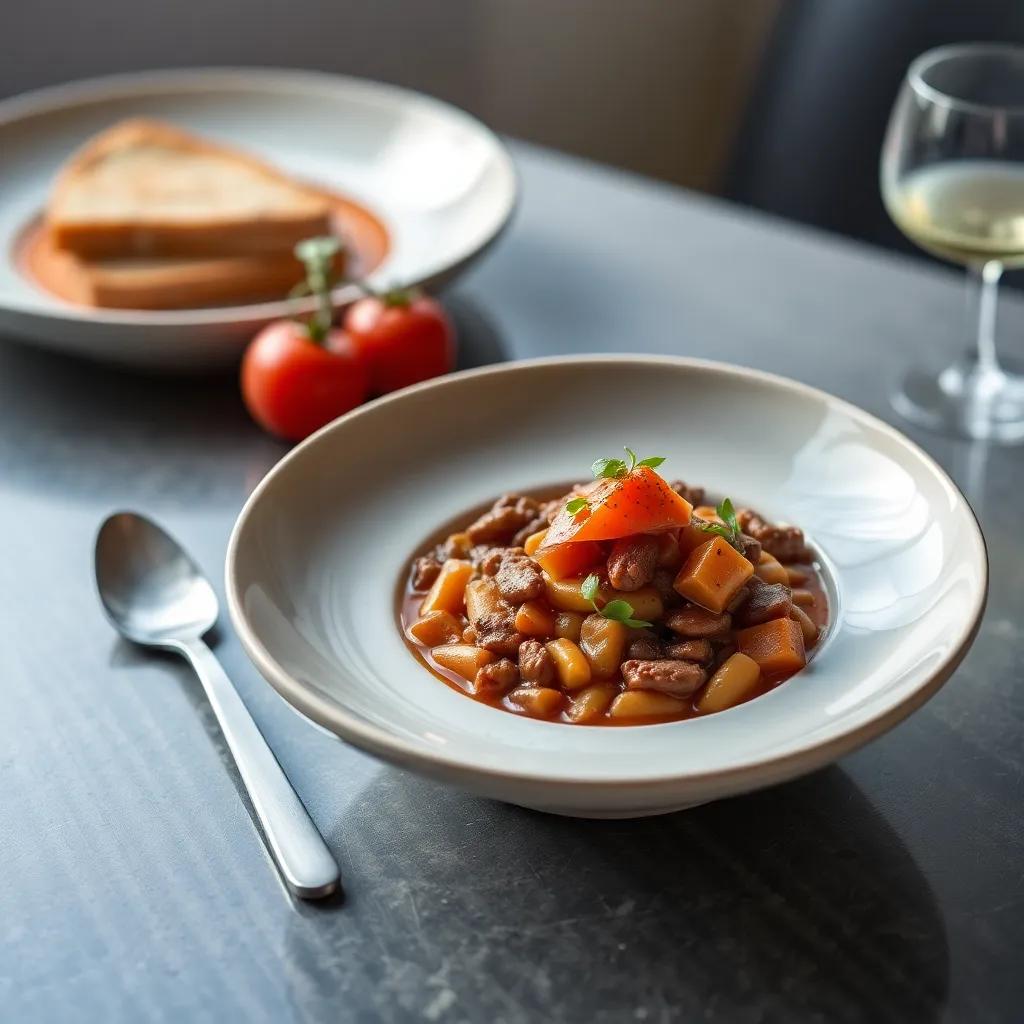
Ingredient Notes
At the heart of an authentic Fabada Asturiana lie a few standout ingredients that truly define its character and soul. Understanding their origins and qualities not only elevates your dish but also honors the tradition behind this beloved Spanish stew.
Fabes de la Granja (Asturian White Beans): These large, creamy white beans are the star of the stew, prized for their tender texture and subtle, buttery flavor after slow cooking. Grown organically in the Asturias region, they have a delicate skin that softens beautifully while holding their shape—not turning mushy like some other varieties. When shopping, look for plump, uniform beans free of cracks or discoloration, and soak them overnight to achieve that signature silkiness. If you can’t find Fabes de la Granja, large cannellini or Great Northern beans make decent substitutes, although the nuance in texture and flavor won’t be quite the same.
Chorizo and Morcilla (Spanish Sausages): These cured meats inject Fabada with its unmistakable smoky and savory depth. Chorizo offers vibrant paprika-spiced warmth and a satisfying fatty richness, while morcilla (blood sausage) introduces earthiness and a hint of sweetness that balances the stew. Select artisan or authentic Spanish-style sausages with natural casings for the best results. In a pinch, high-quality smoky sausages can substitute, but avoid heavily processed versions to maintain the stew’s integrity.
Smoked Paprika (Pimentón de la Vera): More than just a seasoning, this paprika is the aromatic thread weaving the flavors together. Sourced from the La Vera region of Spain, it’s traditionally smoked over oak fires, imparting a rich, complex smoky essence that’s both sweet and slightly spicy. Use the sweet (dulce) variety for Fabada, which adds warmth without overpowering heat. Regular paprika lacks that smoky character, so opting for pimentón is key. Keep it in a cool, dark place to preserve its vibrant flavor.
Pancetta or Pork Belly: The simmering chunks of pork belly or pancetta enrich the broth with luscious fat and meaty depth, helping to create the stew’s signature silky mouthfeel. Freshness matters here—choose cuts with a good balance of lean meat and fat, ideally from trusted butchers. While pancetta is Italian, it stands in well for Asturian pork belly, contributing a gentle saltiness and unctuous texture. If unavailable, a slab of unsmoked bacon can work as a substitute, but it may change the flavor profile slightly.
Paying attention to these ingredients not only enhances your Fabada’s authenticity but also connects you to the Asturian tradition passed down through generations. Whether sourcing specialty products online or from a local ethnic market, choose quality over convenience—it makes all the difference when crafting this heritage-rich, soul-warming stew.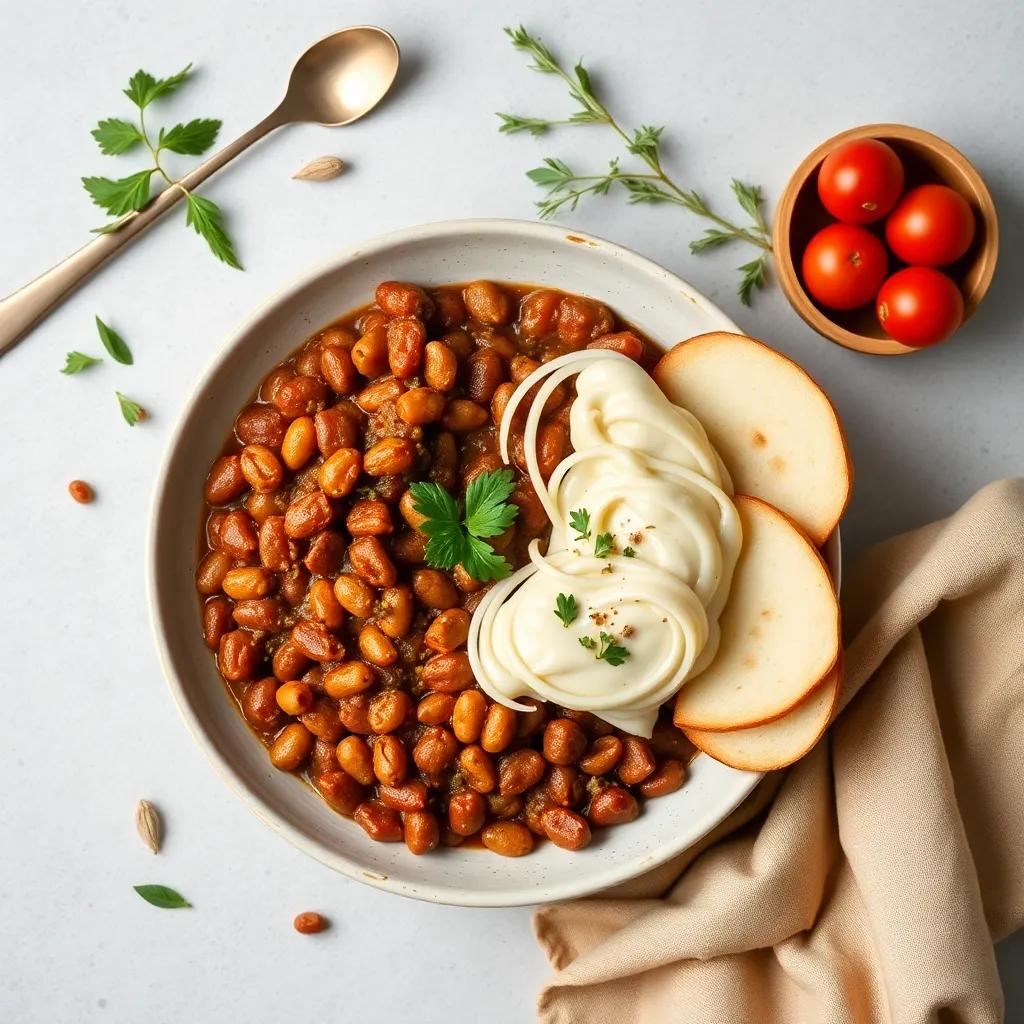
Tips & Variations
Mastering Fabada Asturiana is as much about patience and respect for tradition as it is about creativity and adaptability. Here are some expert tips and thoughtful variations to help you make this iconic Spanish stew truly your own while honoring its authentic roots.
- Mind the Soaking and Simmering: To achieve the signature creamy yet intact texture of the beans, soak them overnight and simmer gently at a low temperature. Boiling too vigorously can burst the skin and turn your stew into mush. If you notice the liquid reducing too quickly, add hot water rather than cold to maintain an even cooking temperature.
- Layer Flavors with a Sofrito Twist: The classic sofrito of onion, garlic, and smoked paprika is essential, but feel free to deepen its complexity by adding a finely chopped red bell pepper or a touch of tomato paste during the sauté. This subtle variation adds a hint of sweetness and richness that complements the smoky notes.
- Play with Meat Options (or Go Meatless): While chorizo, morcilla, and pork belly define the traditional Fabada, you can tailor the protein to your preference or pantry. For a lighter version, try substituting the pork belly with smoked turkey or chicken thighs, which still impart robust umami without overwhelming richness. For a vegan adaptation, omit all meats and enhance the stew’s depth with smoked paprika, liquid smoke, and sautéed mushrooms or smoked tofu for a satisfying plant-based experience.
- Spice it Up or Down: The sweet smoked paprika provides warmth without heat, but adventurous eaters can add a pinch of cayenne or a few dried chili flakes to bring a gentle kick that wakes up the palate. Alternatively, for a milder version suitable for kids or sensitive eaters, reduce the paprika slightly and focus on fresh herbs like bay leaves and thyme.
- Alternative Beans and Textures: If you can’t find Fabes de la Granja, cannellini or large navy beans are excellent stand-ins. Opt for beans with a firm skin that won’t disintegrate easily. To add interesting texture contrast, consider tossing in a handful of cooked, diced potatoes or chestnuts in the last 20 minutes of cooking for a subtle sweetness and creaminess.
- Finishing Touches Matter: Just before serving, a drizzle of robust Spanish olive oil or a swirl of rendered fat from the cooking meats adds a glossy richness and silky mouthfeel. A sprinkle of fresh parsley or a few drops of sherry vinegar can brighten the stew, giving it a fresh, layered finish.
- Adjusting Salt and Liquid: Because the cured meats are naturally salty and release flavors into the stew, taste toward the end before adding additional salt. Keep in mind that the stew thickens as it cools, so it should be a bit looser in consistency when hot.
- Make It Ahead: Fabada Asturiana tastes even better the next day as the flavors meld. If you’re cooking for a gathering, prepare it a day in advance and gently reheat, adding a splash of water or broth to restore the desired consistency.
By incorporating these tips and variations, your Fabada becomes a versatile canvas—whether you’re preserving the traditions of Asturias or creatively interpreting this soulful stew for your kitchen table.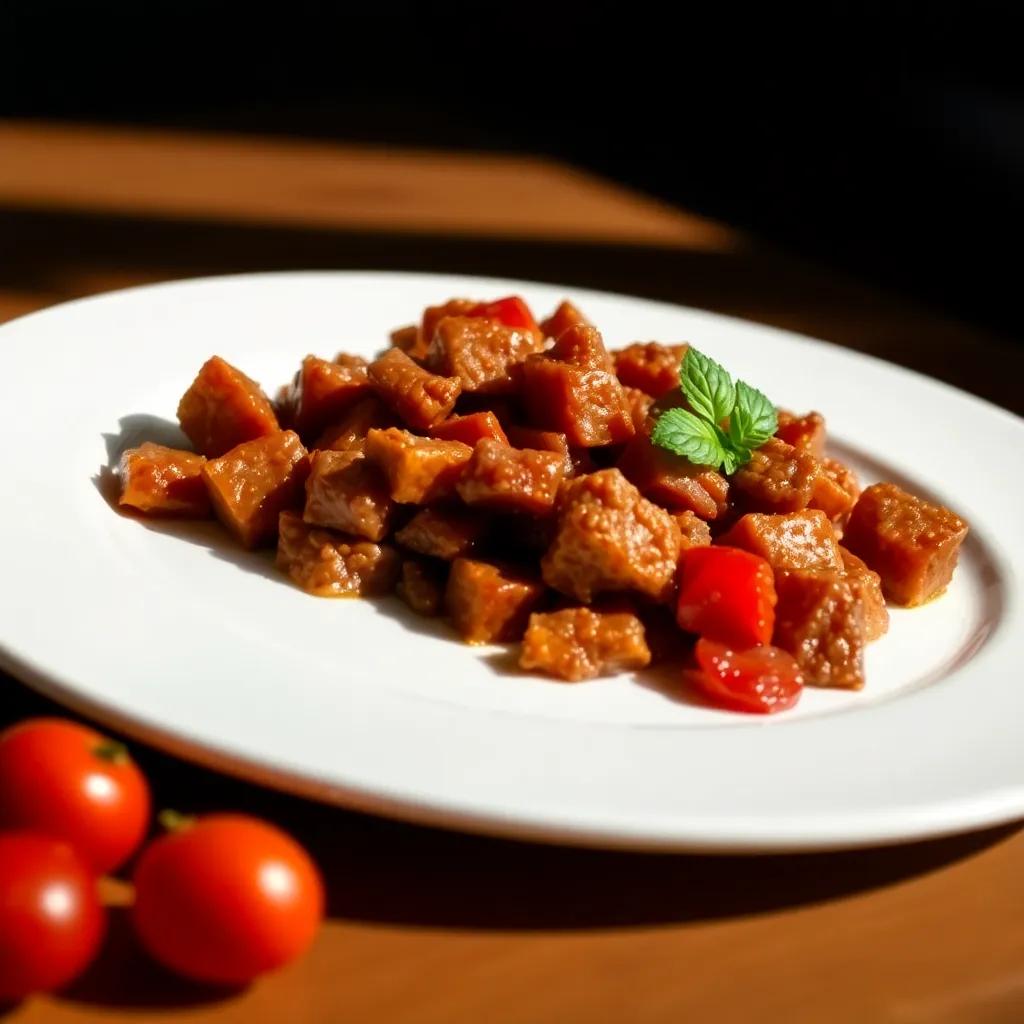
Leftovers & Storage
Storing your Fabada Asturiana leftovers properly will ensure you can enjoy the rich, comforting flavors of this hearty stew long after your initial meal. Given its robust ingredients—tender white beans, smoky sausages, and luscious pork belly—Fabada holds up well when stored and reheated, making it an ideal candidate for meal prepping or freezing for later.
To keep your Fabada fresh, transfer the cooled stew into airtight containers. Glass containers with tight-fitting lids are excellent because they won’t absorb odors and are safe to reheat directly in the microwave or oven. If storing in plastic containers, ensure they are BPA-free and sealed well to maintain freshness and prevent spills.
In the refrigerator, Fabada will stay delicious for up to 3 to 4 days. Because the beans absorb a lot of liquid and the fats from the meats settle as it cools, you might notice the stew thickens or solidifies slightly. When reheating, do so gently over low heat on the stovetop or in short bursts in the microwave, adding a splash of water or broth to loosen the consistency back to that silky richness you love.
For longer-term storage, Fabada freezes beautifully. Portion it out into freezer-safe containers or heavy-duty freezer bags, leaving some headspace for expansion. Properly sealed, it will maintain its flavor and texture for up to 3 months in the freezer. When ready to enjoy, thaw the stew overnight in the refrigerator, then warm it slowly on the stove, stirring occasionally. Avoid high heat to prevent the beans from breaking apart.
If packing Fabada for lunches or on-the-go meals, choose sturdy containers with secure lids to avoid leaks, and consider packing a side of crusty bread separately to keep it from becoming soggy. Reheat Fabada thoroughly before serving, and if possible, finish with a drizzle of fresh olive oil or a sprinkle of smoked paprika to revive its vibrant flavors.
Finally, because Fabada’s flavors deepen and mellow with time, leftovers often taste even better a day or two after cooking. Embrace this as an opportunity to savor the stew in multiple meals, whether as a quick bowl on a busy night or transformed into other Spanish-inspired dishes like omelets or rice bowls. Proper storage and reheating will ensure every bite remains as soul-warming as the first.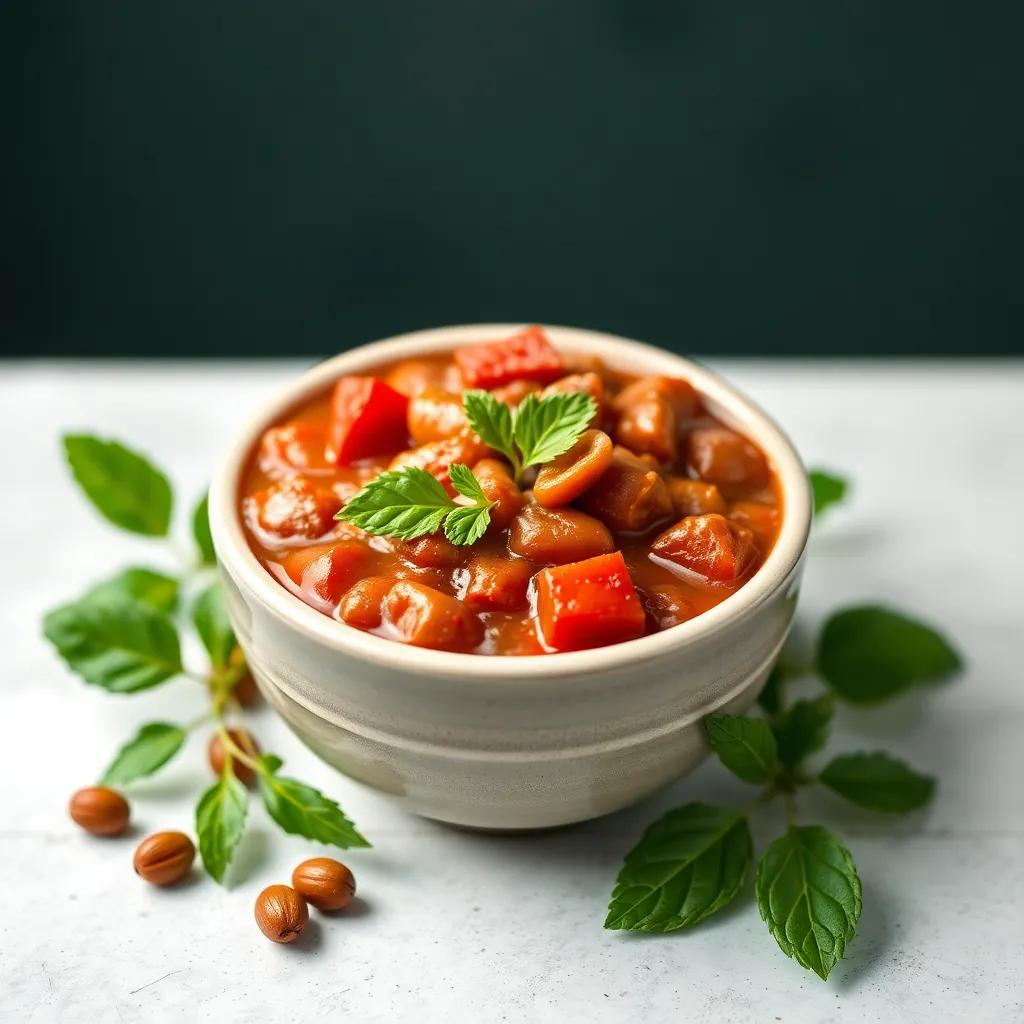
Behind the Recipe
Fabada Asturiana is much more than just a hearty bean stew—it’s a culinary emblem of Asturias, a lush, green region in northern Spain where hearty, rustic fare comforts against the cool Atlantic climate. Traditionally, this dish was a humble peasant meal, born out of necessity rather than extravagance. Farmers and laborers would rely on simple, locally available ingredients—especially the creamy Fabes de la Granja beans and robust cured pork products—to fuel long, hard days with nourishing, sustaining food.
The origins of Fabada trace back centuries, with recipes passed down through generations often cooked in cast-iron pots over wood fires. Its slow-simmered nature not only tenderizes the beans but also melds rich flavors into a thick, luxurious broth that warms body and soul alike. Each bite tells a story of Asturias’ deep connection to the land—its fertile fields yielding prized beans, the region’s renowned charcuterie lending smoky, savory accents, and the patient care that turns modest ingredients into something majestic.
For many Asturians, Fabada isn’t merely a meal but a symbol of home and tradition, often served during family gatherings, festive celebrations like Christmas and New Year, or simply as a lesson in slow food appreciation. The layering of flavors—from the subtle sweetness of the beans to the bold paprikas and sausages—reflects a culinary philosophy focused on balance, heritage, and patience.
On a personal note, those who have made Fabada at home often recall the mild but profound magic of watching the stew bubble gently over hours, the kitchen filling with smoky paprika aromas and the promise of a fulfilling feast. It’s not just cooking; it’s participating in a ritual that connects you to Asturian culture and invites you to slow down and savor. Whether you encounter Fabada in a cozy mountain village or recreate it in your own kitchen, the dish’s authenticity lies in honoring its roots while embracing the comfort it brings.
In essence, Fabada Asturiana is a delicious testament to regional pride, a celebration of heritage ingredients, and a heartfelt reminder that simple dishes—handmade with time and care—are often the most memorable. As you dive into this recipe, you’re stepping into a culinary story shaped by geography, tradition, and the universal love for food that nurtures both body and community.
FAQ
Can I make Fabada Asturiana vegetarian or vegan?
What can I substitute if I can’t find Asturian fabes beans?
How should I store leftovers, and how long do they keep?
Is it okay to prepare fabada in a slow cooker or Instant Pot?
Can I adjust the spice or smokiness levels to my taste?
Do I need to soak the beans before cooking?
What sides or drinks best complement Fabada Asturiana?
Let’s Get Cooking!
There’s something truly comforting about a steaming bowl of Fabada Asturiana—its rich flavors and hearty ingredients tell a story of tradition and warmth from the heart of Spain. Whether you’re new to Spanish cuisine or a seasoned foodie, this authentic bean stew invites you to slow down, savor each bite, and enjoy a little taste of Asturias right at your own table.
Give this beloved recipe a try and see how it transforms your next meal into a cozy celebration. If you do, don’t forget to drop a comment below, share your experience, or even tell us about your own unique spin on this classic dish—we’d love to hear how Fabada Asturiana finds its way into your kitchen!











